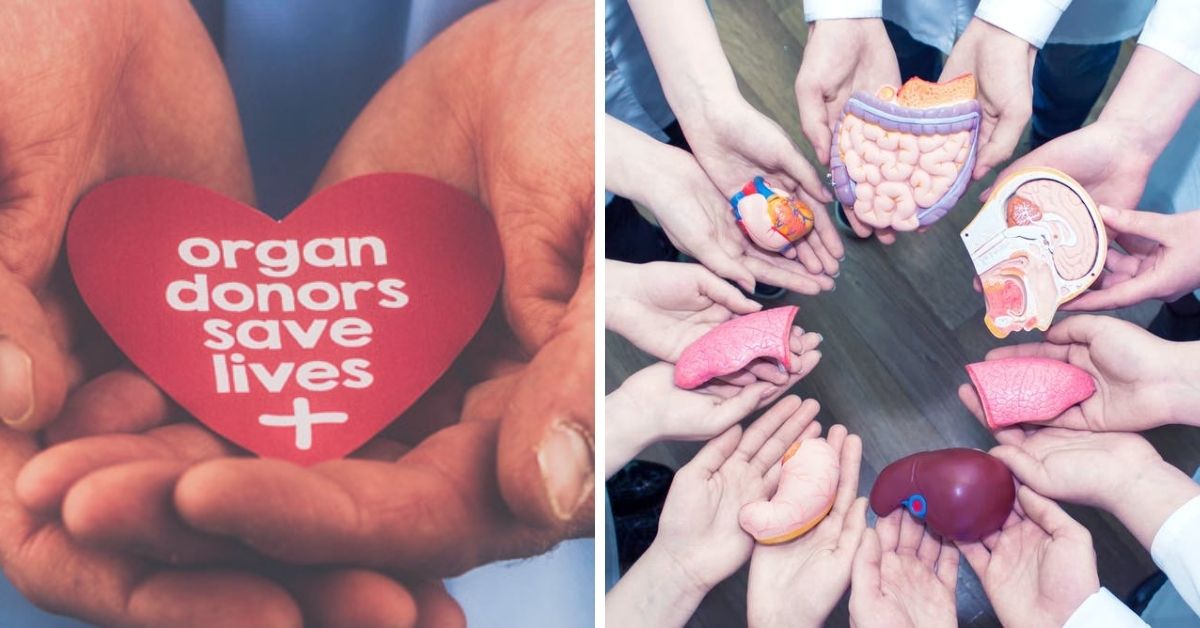
Organ donation is the whole method of recovering a human organ from a living or deceased person, who is referred to as a Donor, and transplanting it into a beneficiary. More than 16.5 crore people have enrolled as organ donors, but only about 3 in 1,000 can become donors when they die.
Organ Donation
As most organ and tissue donations occur after the donor has expired, some organs which include a kidney or part of a liver or lung and tissues can be donated while the donor is alive.

Credits: americanhospitalassosiation
The organ donation method may include the replacement of lungs, kidneys, heart, liver, pancreas, and intestines for transplantation to critical patients on the organ transplant waiting list.
Whereas a tissue donation may include corneas, bone, skin, heart valves, nerves, blood vessels, ligaments, tendons, and other soft tissue.
The organ donation process:
- A subject with a critical brain injury is admitted to the hospital, and all efforts are made to treat and save that person’s life.
- The patient, however, does not respond to treatment, has unchangeable brain function, requires a ventilator, and – after analysis – is reported brain dead. A brain-dead person is considered dead, although his or her primary functioning may be artificially supported by a ventilator for some time.
- A request is made to decide the agreement of the patient for donation.
- The agreement is reviewed to decide whether that patient announced their decision to donate organs and tissue. If the patient is a registered donor then first-person permission takes effect, allowing the donation to continue. However, if the patient’s name is not listed on the Donor Registry then their family is allowed to donate the patient’s organs and tissue.
- Once permission is defined, the donor is kept on the ventilator and supported with fluids and drugs. Further, questionnaires and an interview with the donor’s family or closed one are made to decide whether each organ is healthy and suitable for transplantation.
- Possible organ receivers are classified according to blood type, the hardness of illness, other medical criteria, and other protocols are made.
- The donor may continue at the hospital or be moved to a surgical center. Medical teams reach and the donor is transferred to the operating room on the ventilator.
- After a minute of silence in the account of the donor, surgery starts. Organs are separated, cooled, and stored with appropriate solutions. Surgical teams then promptly return to their respective hospitals with the organs to deliver the recipients’ transplant surgeries.
- Meanwhile, Tissue benefaction may take place after the organs are removed.
- The donor is delivered to the family and the funeral can take place.
- The hospital will incorporate all costs correlated with the organ and tissue acquisition process.
- The donor’s family is then informed with basic information about the beneficiaries to whom the organ is donated.
While in some circumstances, a donation can happen with a patient who, if not brain dead, is seriously brain-injured and has no hope for improvement. The family or loved ones can decide to end life withdrawing machine support, and shortly after the heart rests a doctor declares the patient’s death. Following this, organs may then be recovered instantly for transplantation. This method is also known as donation after circulatory death. This organ donation process usually takes about 24-36 hours.
Frequently asked questions:
How to donate organs after death in Bangalore? How to be an organ donor?
What is the age limit to donate organs in Bangalore?
A person should be 18+, and for most of the organs deciding factor is the person’s physical condition and not age.







